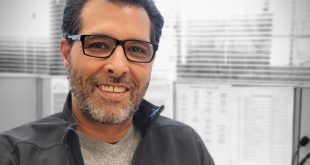Introduction. I have been working remotely since March 2020. At first, I was skeptical about the effectiveness of a fully remote work and service environment, but it has proven to be optimal for me and has greatly benefited our organization in numerous ways. However, with the current trend of businesses announcing return-to-office policies and casual comments suggesting that “obviously everyone prefers in-person interactions,” I couldn’t help but wonder what we might be overlooking.
The Event. When I was presented with the opportunity to deliver an in-person talk, it seemed like an excellent chance to evaluate the face-to-face experience and compare it with the 50+ instances I had spoken via video conferencing (hereafter referred to as VTC) over the past four years. I thought I had a clear idea of how it would unfold.
My background. I have a visual impairment and am also deaf in one ear. While my hearing loss is not a significant hindrance, it does make it challenging for me to hear in environments with background noise. Having worked for 25 years with vision loss, I have adapted my workspace and work style to accommodate my needs. I depend on high magnification, a 42” computer screen, and various organizational techniques.
Naturally, for the event, I couldn’t place a 42″ screen in front of my face. Instead, I printed my outline in a massive font size, spanning over 20 pages, and brought along my high-magnification glasses. Higher magnification reduces the focal distance, meaning objects need to be closer for them to be in focus.
The Speech. I stood at a lectern, my notes stapled and laid out before me, a microphone mounted just above. Unfortunately, my notes were just out of my glasses’ focal range, forcing me to lower my head to reference them. My lack of depth perception made it difficult to gauge the distance to the microphone, resulting in several awkward collisions. After a few such incidents, I began to adapt, although it was a challenge to split my focus.
Audience. In-person, discerning facial expressions is a challenge for me, and with my high-magnification glasses, people are a blur. Fortunately, I received some laughter and audible reactions during my speech, assuring me that I was connecting with the audience. After the speech, I was approached by several individuals who thanked me and shared their own stories, which was very gratifying.
Results. My experience was surprising in several ways. Managing my notes and microphone presented a challenge that I used to frequently face before working remotely. I had completely forgotten about this, so it caught me off guard. On a positive note, I had also forgotten about the impact of spontaneous audience responses and the casual post-event conversations and comments.
Comparing this experience with how it would have been through VTC, the primary difference lies in the accessibility of my notes. On my computer, I can effortlessly alternate between the video window and my fully accessible notes. This enables me to maintain my focus with ease, while also catching glimpses of faces and visual reactions. My timing and pacing would have also been improved. However, these benefits would be offset by the inability to hear people laughing or other responses, as everyone would be on mute.
Analysis. The audience’s response highlighted the benefits of in-person interaction. For roles that heavily depend on human connection, such as politics, sales, and entertainment, it’s understandable why one might consider in-person interaction to be “obviously better.” However, for most types of work, it seems more like a distraction and hindrance, and generally, it’s far less accessible.
As far as the advantages:
- Notes/agenda/references. Managing my notes in-person is cumbersome and limited to what I have pre-prepared (which takes additional time). Alt-tab between the video window and my notes is effortless and allows for access to many other computer-based resources if needed.
- Hearing. In-person, background noise can make it difficult to hear and is often not something that can be controlled. With VTC, the audio environment can be much more controlled. Closed captions and chat can also aid in understanding others.
- Transportation. In-person I am usually dependent on someone driving since public transportation is often not viable and that is time and expense that is not productive. With VTC, I am already there at zero time and cost.
- Recordings. In-person, one can arrange for a recording, but it is usually inconvenient and can be difficult to get good results. VTC has this covered, although the final product from these two types of events is not directly comparable.
- Superficial factors. Some people will use height, build, gender, clothes, expensive watches, fancy venues, etc., unintentionally or purposely to impress, intimidate, or otherwise influence others independent of the work or content they are presenting in an in-person setting. In VTC, many of these factors are far less effective or not apparent.
Conclusion. As a person with a disability, professionally, there is nothing I can do better in person than I can do via a computer. My computer is the most accessible environment for me and my work. Any in-person activities put me at a disadvantage in a variety of ways, some of which are illustrated above. This will be true for many other people with disabilities, and even those without disabilities (but certainly not all, since everyone’s situation is unique).
The highlight of my in-person speech was telling a joke and getting a spontaneous laugh. That is indeed a special kind of feeling. However, that comes at a cost.
Going beyond accessibility, I do not see much utility in the in-person work component for many types of work. In my day-to-day work, I don’t need applause, and I am perfectly able to provide staff with feedback in a professionally appropriate way. As far as productivity is concerned, with VTC all I see are results. That’s ideal from my management perspective. Do I care what the staff looked like or where they were when they did the work? I’ve observed that in person, people’s effectiveness is too often assessed on superficial characteristics.
I hope that sharing my experience as a person with a disability at work helps to add some color to your understanding of what accessibility means and offers some practical factors you can consider when creating events and work environments that are more inclusive.
 Computer Technologies Program The Bridge to a Career
Computer Technologies Program The Bridge to a Career

